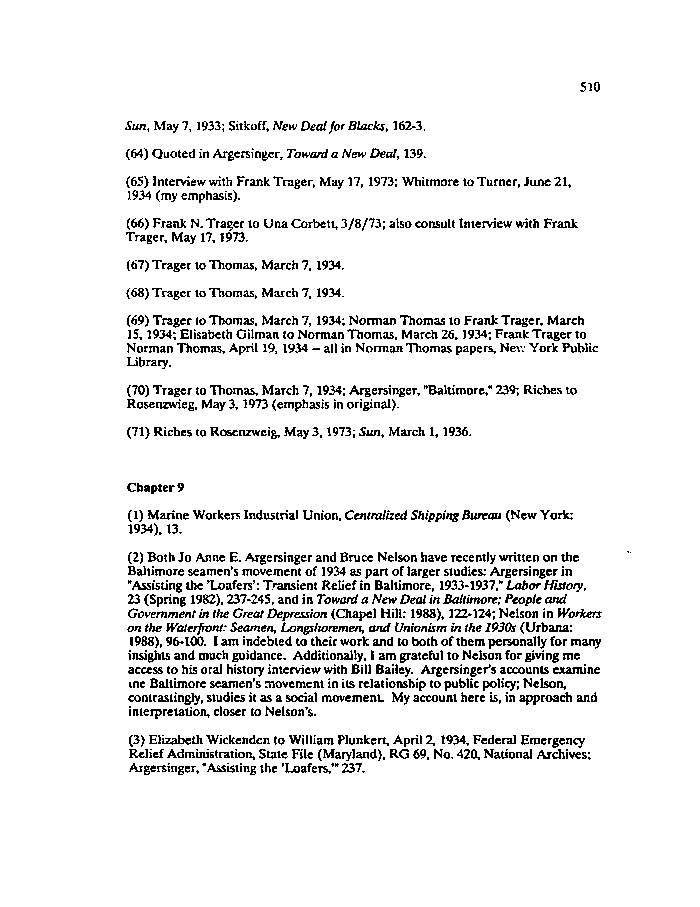|
510
Sun, May 7,1933; Sitkoff, New Deal for Blacks, 162-3.
(64) Quoted in Argersinger, Toward a New Deal, 139.
(65) Interview with Frank Trager, May 17,1973; Whitmore to Turner, June 21,
1934 (my emphasis).
(66) Frank N. Tracer to Una Corbett, 3/8/73; also consult Interview with Frank
Trager, May 17,1973.
(67) Trager to Thomas, March 7,1934.
(68) Trager to Thomas, March 7, 1934.
(69) Trager to Thomas, March 7, 1934; Norman Thomas to Frank Trager, March
15,1934; Elisabeth Oilman to Norman Thomas, March 26,1934; Frank Trager to
Norman Thomas, April 19, 1934 — all in Norman Thomas papers, Ne\v York Public
Library.
(70) Trager to Thomas, March 7,1934; Argersinger, "Baltimore," 239; Riches to
Rosenzwieg, May 3,1973 (emphasis in original).
(71) Riches to Rosenzweig, May 3,1973; Sun, March 1,1936.
Chapter 9
(1) Marine Workers Industrial Union, Centralized Shipping Bureau (New York:
1934), 13.
(2) Both Jo Anne E. Argersinger and Bruce Nelson have recently written on the
Baltimore seamen's movement of 1934 as part of larger studies: Argersinger in
"Assisting the 'Loafers': Transient Relief in Baltimore, 1933-1937," Labor History,
23 (Spring 1982), 237-245, and in Toward a New Deal in Baltimore; People and
Government in the Great Depression (Chapel Hill: 1988), 122-124; Nelson in Workers
on the Waterfront: Seamen, Longshoremen, and Unionism in the 1930s (Urbana:
1988), 96-100. I am indebted to their work and to both of them personally for many
insights and much guidance. Additionally, I am grateful to Nelson for giving me
access to his oral history interview with Bill Bailey. Argersinger*s accounts examine
me Baltimore seamen's movement in its relationship to public policy; Nelson,
contrastingly, studies it as a social movement My account here is, in approach and
interpretation, closer to Nelson's.
(3) Elizabeth Wickendcn to William Plunkert, April 2,1934, Federal Emergency
Relief Administration, State File (Maryland), RG 69, No. 420, National Archives;
Argersinger, "Assisting the 'Loafers,'" 237.
|

